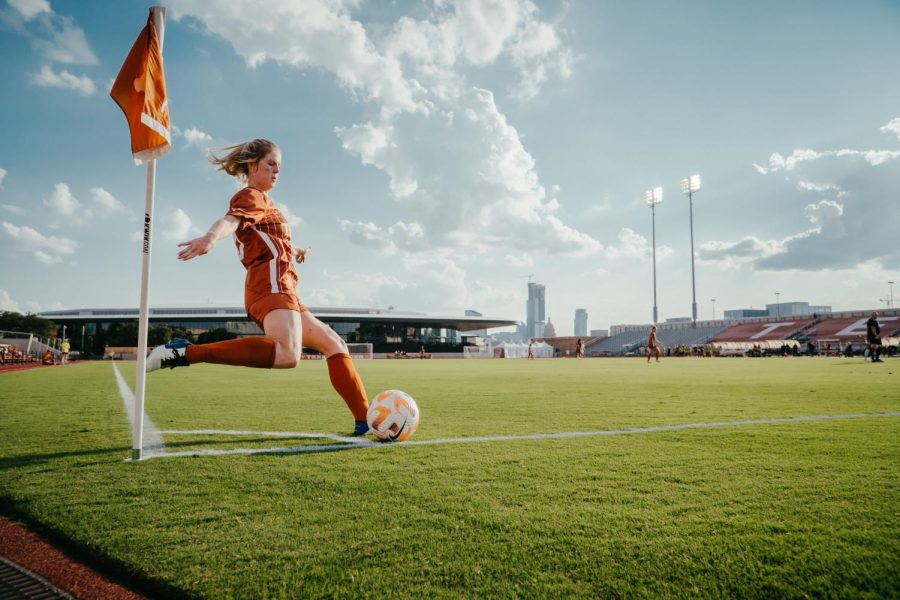Keeping athletes safe, one lawn at a time
April 10, 2023
What’s one of the most important tools to keeping Texas athletes safe on the field? A lawnmower.
As the Texas soccer team finishes their last drill at 10:30 a.m., Alex Warner, athletic turf and field specialist for Mike A. Myers Field, starts driving a lawnmower the size of a small tractor onto the field.
Clipped green Bermuda grass flies up off the ground as the rumbling lawnmower passes over the blades. For about an hour, the machine slowly rolls back and forth across the field, creating sections of perfectly aligned rectangles.
A lot of thought goes into making the fields the right surface for both soccer and track athletes to reach their optimal performance on.
“The most important thing is creating a playing surface that’s, number one, safe and, number two, playable,” Andrew Powers, director of turf and grounds, said. “We’ll take (that) into account (by) watching the game, watching the ball roll (and) watching the players run.”
But observation only goes so far.
“I communicate with the coaches regularly on how the field is doing, (and) I also coordinate with the athletic trainers to see what they think,” Warner said. “(We also) have technology that does tell us how hard the ground is.”
According to Warner and Conduct Science, a Clegg Impact Tester is used to test how hard the ground is by dropping a weight on the ground and measuring the g-force, or gravitational force. For the Mike A. Myers field, the field is kept between 45 and 60 g’s.
If the field is too hard, the players will be more susceptible to impact-related injuries. For instance, the NFL has a set limit of 100 g’s to keep its athletes safe. However, if the field is too soft, the players don’t have any grip and are at greater risk of rolling their ankles.
“We (will use the Clegg Impact Tester) probably once every couple of months,” Warner said. “And that can also give us a clue on what type of agricultural practice to do to make it harder (or) to make it softer.”
Per Warner and Ohio State University, in order to harden up the fields, the field specialists can roll out the fields, essentially applying stress to the field to compact the soil.
To make the fields softer, the field specialist can aerate the fields, a practice that includes punching small holes into the ground to free up the soil and let air get down into the roots.
“The biggest thing really with anything else is just rest,” Powers said. “The more you use one area of the field and continuously beat it up, the more severe the damage in that area is going to be.”
Letting the fields rest takes time. In order to give the fields the time and attention it needs, the Texas turf and field team prepares for events months in advance.
“For soccer, I get their six month schedule from January up until June, and I’ve been planning everything for about two to four months in advance,” Warner said.
The plan is multifaceted and complex: creating fertility plans to figure out the nutrients the soil needs, overseeding with annual ryegrass to make sure the color of the grass is right and painting the lines.
Preparation of both the expected and the unexpected by Warner, Powers and the rest of the Texas field maintenance team helps keep the Longhorn athletes safe and less prone to injury.
“It’s always a good idea to be ready for something that you might not know is coming up soon,” Warner said. “Working with (the) outside, you have Mother Nature to deal with, so anything can happen on the flip of a dime.”













